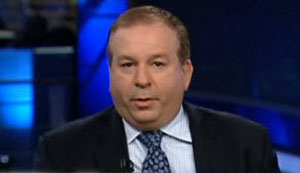 Gold continues making new record highs on a regular basis as demand increases among governments.
Gold continues making new record highs on a regular basis as demand increases among governments.
According to newspaper reports, China’s gold demand might be more than 450 tonnes this year, up from 395,6 tonnes last year, and the country will most likely be a buyer in the coming weeks. The yellow metal has finally surpassed the $1200/oz mark as investors continue using the yellow metal as a hedge against the weakening dollar and against concerns that central banks will not remove QE in time. Whether the rise of gold is symptomatic of a greenback bear market versus its innate bullishness, that’s up for debate. In the meantime, the precious metal keeps making new highs. And it may go much, much higher. According to Gluskin Sheff Chief Economist David Rosenberg, gold could hit $2623/ per troy oz.
“Gold just capped off its best month in a year — up 14% in November and 34% so far in 2009. Not even the S&P 500 can compete with that. Helping drive the latest gains was the news out of the China Gold Association that the country’s gold demand is on pace this year to exceed 450 metric tonnes, a 14% increase over the 395.6 tonnes in 2008. (In contrast to India, jewelry sales are up double-digits in China so far this year.) By way of comparison, China, which recently surpassed South Africa as the world’s largest producer, is on its way to 310 tons of newly mined output this year, or more than 30% below its level of demand.
It’s not just the middle-class in China that is starting to buy gold, but the central bank, which has very deep pockets, is going to do likewise. We just came across a Bloomberg News article quoting an official from the state-owned Assets Supervision and Administration Commission (Ji Xiaonan, the Chief) as saying “we recommend China increase its gold reserves to 6,000 metric tons within three-to-five years and possibly to 10,000 tons in eight to 10 years.” China’s reserves, after a 76% buildup since 2003, currently stand at 1,054 tons, so we are talking here about the prospect of some pretty heaving buying in coming years.
If China were to lift their gold reserves to 5,000 tonnes, which is equivalent to about two years of global production, that shift in demand would boost the gold price by $800/oz to around $2,000 ($1,978) based on our models. If China moves towards 10,000 tonnes, well, that would end up taking the gold price to $2,623/ounce if our calculations are in the ball-park.
Make no mistake, we are gold bulls. Central banks have deep pockets and production of gold is stagnant so the demand-supply backdrop for bullion is bullish. At the same time, we have to pay respect for market positioning over the near-term. The market for precious metals is overextended right now after the parabolic move of the past two months. The net speculative long position has swelled to a record 273,552 contracts (100 ounces each) on the COMEX. Open interest has never been higher, at 693,661 contracts. So this is one crowded trade — as is the short-trade on the USD against all the major currencies, especially the commodity-based units.
So, we could get a meaningful gold correction at any time, and we are talking about a correction in what is still a secular bull market — the 200-day moving average is $970/oz, which means we could get as much as a 20% pullback and no fundamental trendline would be violated. We remain long-term gold bulls, and our commentary remains fundamentally bullish, but anything that could spark a countertrend rally in the U.S. dollar, which is our principal near-term concern, would put gold at a much better price point for investors than the peak we are at today.”
[emphasis added]- Bulenox: Get 45% to 91% OFF ... Use Discount Code: UNO
- Risk Our Money Not Yours | Get 50% to 90% OFF ... Use Discount Code: MMBVBKSM
Disclaimer: This page contains affiliate links. If you choose to make a purchase after clicking a link, we may receive a commission at no additional cost to you. Thank you for your support!

Leave a Reply